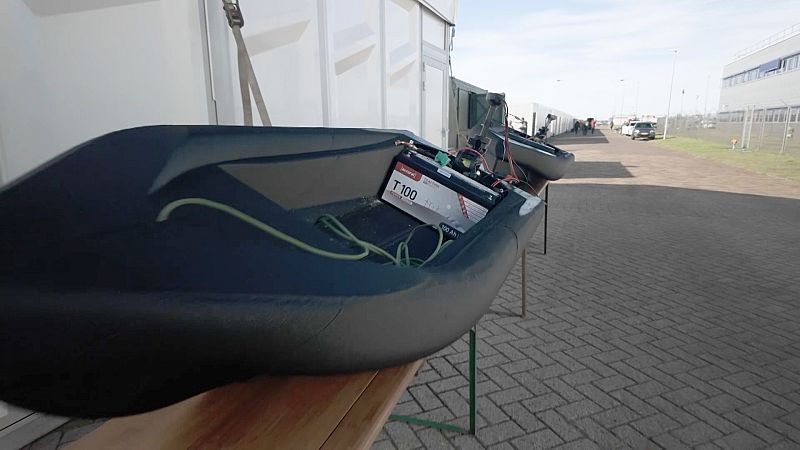NATO special forces are learning to build sea drones. How could they be used?

NATO is expanding its work with sea drones amid rapid advancement in warfare technologies.
Last month, NATO trained its elite soldiers to design, build, and deploy unmanned surface vessels (USVs), which operate on the surface of the water like small boats and can be either fully or partly autonomous. They can also transport soldiers.
The naval drones are designed to conduct reconnaissance and maritime strike missions, according to NATO.
The special force soldiers are trained in swimming, para-dropping, and shooting and will control the USVs when needed or teach others to control and deploy the drones.
“This is some special skill that only SOF operators can handle,” Massimiliano Rossi, NATO Allied Special Operations Forces Command’s (SOFCOM) chief of staff, said in a video published by NATO.
Rossi said the exercise, called Bold Machina, focused on having “an advantage against a bigger enemy”.
“Imagine a small SOF unit wants to attack a bigger navy using drones, it’s going to be a surprise, and it’s going to be with very non-expensive assets that they can create the advantage needed to go against a bigger and stronger enemy,” he added.
The mono-hulled USVs were built using affordable materials and a large 3D printer. NATO said it partnered with private companies to produce the drones.
The training for building and deploying the USVs took place in Den Helder in the Netherlands, where soldiers learned to install batteries, motors, and an open-source operating system before launching the vessels in the harbour.
While NATO acknowledged the technology is still developing, its officers said the focus is on adapting quickly to changing conditions.
Andrej Zvaigzne, a senior researcher at the Institute of Applied Computer Systems at Riga Technical University,told Euronews Nextlast year that USVs can be hard to communicate with if they are far away from central command.
“We’ve come to the realisation that we need to [act] aggressively,” said Kurt Muhler, the director of maritime development at SOFCOM.
Muhler said the dynamic nature of warfare technology is changing the environment in which soldiers operate.
“Whether you’re kicking indoors or you’re swimming in a harbour, the technology is arriving to make it more difficult, or in some cases, more advantageous for us if we’re using technology,” Muhler said.
Similar tech has already been used by Ukrainian special operators in its war with Russia.
NATO says these drones could be used in a crisis scenario to help soldiers.
For more on this story, watch the video in the media player above.
Today

